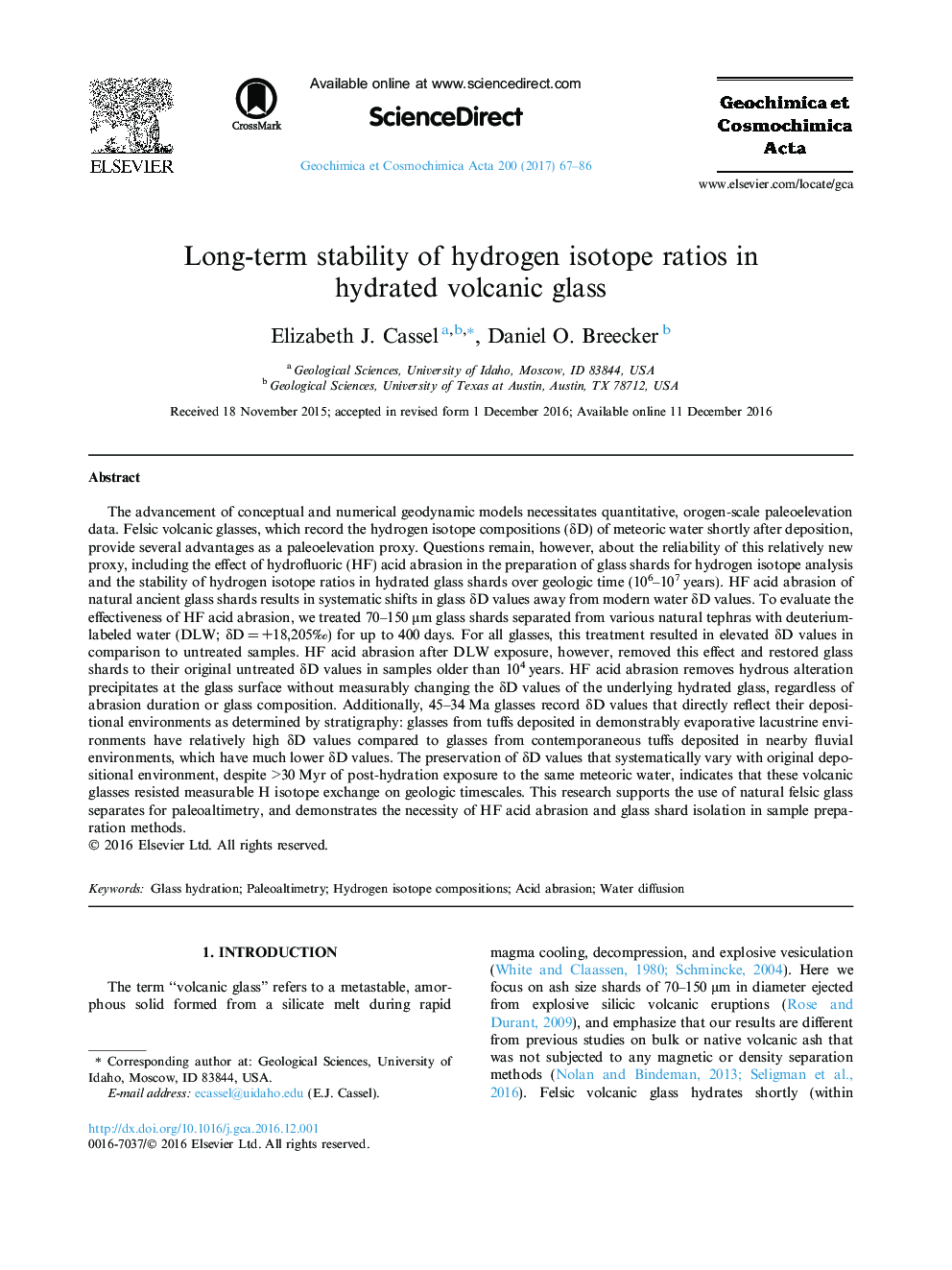| Article ID | Journal | Published Year | Pages | File Type |
|---|---|---|---|---|
| 5783565 | Geochimica et Cosmochimica Acta | 2017 | 20 Pages |
Abstract
The advancement of conceptual and numerical geodynamic models necessitates quantitative, orogen-scale paleoelevation data. Felsic volcanic glasses, which record the hydrogen isotope compositions (δD) of meteoric water shortly after deposition, provide several advantages as a paleoelevation proxy. Questions remain, however, about the reliability of this relatively new proxy, including the effect of hydrofluoric (HF) acid abrasion in the preparation of glass shards for hydrogen isotope analysis and the stability of hydrogen isotope ratios in hydrated glass shards over geologic time (106-107 years). HF acid abrasion of natural ancient glass shards results in systematic shifts in glass δD values away from modern water δD values. To evaluate the effectiveness of HF acid abrasion, we treated 70-150 μm glass shards separated from various natural tephras with deuterium-labeled water (DLW; δD = +18,205â°) for up to 400 days. For all glasses, this treatment resulted in elevated δD values in comparison to untreated samples. HF acid abrasion after DLW exposure, however, removed this effect and restored glass shards to their original untreated δD values in samples older than 104 years. HF acid abrasion removes hydrous alteration precipitates at the glass surface without measurably changing the δD values of the underlying hydrated glass, regardless of abrasion duration or glass composition. Additionally, 45-34 Ma glasses record δD values that directly reflect their depositional environments as determined by stratigraphy: glasses from tuffs deposited in demonstrably evaporative lacustrine environments have relatively high δD values compared to glasses from contemporaneous tuffs deposited in nearby fluvial environments, which have much lower δD values. The preservation of δD values that systematically vary with original depositional environment, despite >30 Myr of post-hydration exposure to the same meteoric water, indicates that these volcanic glasses resisted measurable H isotope exchange on geologic timescales. This research supports the use of natural felsic glass separates for paleoaltimetry, and demonstrates the necessity of HF acid abrasion and glass shard isolation in sample preparation methods.
Keywords
Related Topics
Physical Sciences and Engineering
Earth and Planetary Sciences
Geochemistry and Petrology
Authors
Elizabeth J. Cassel, Daniel O. Breecker,
